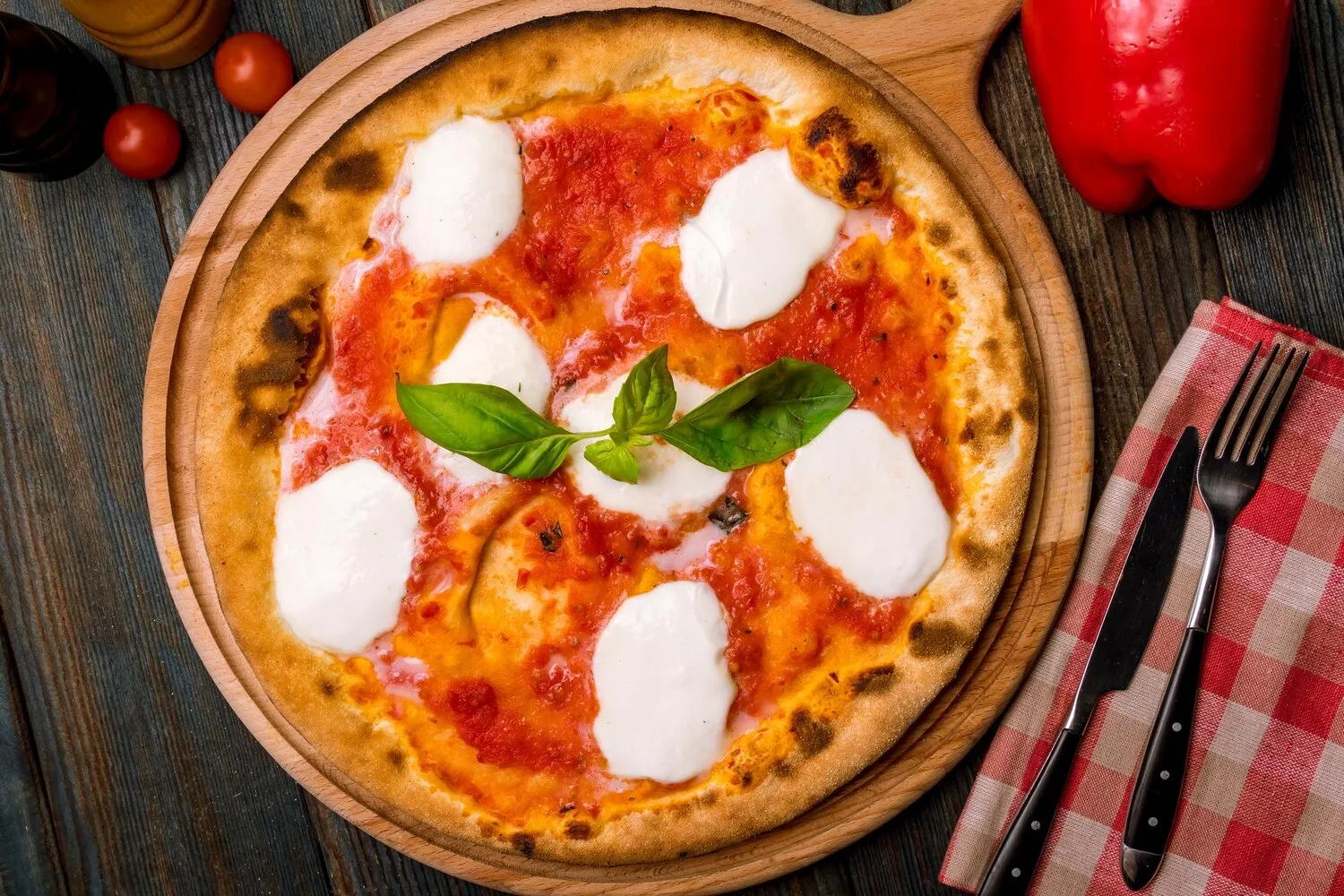
Pizza Margherita
Classic pizza with tomato sauce, mozzarella, and basil.
Nutrition Facts
* The % Daily Value (DV) tells you how much a nutrient in a serving of food contributes to a daily diet. 2,000 calories a day is used for general nutrition advice.
La Grand Poste
Pizza, in its rudimentary forms, existed in Naples for centuries as a simple flatbread. The modern pizza began to evolve in the 18th and 19th centuries. The Pizza Margherita specifically has a widely circulated legend linking it to Queen Margherita of Savoy's visit to Naples in 1889. Seeking a dish representative of the nation, a local baker, Raffaele Esposito, supposedly created a pizza with tomatoes, mozzarella, and basil to represent the colors of the Italian flag.
Pizza Margherita is a symbol of Italian national identity and culinary simplicity. It represents the essence of Italian cuisine: fresh, high-quality ingredients prepared with care and tradition.
National Symbol
The colors of the Margherita (red, white, and green) are said to represent the Italian flag, solidifying its place in Italian culture.
Neapolitan Tradition
Pizza Margherita is a staple of Neapolitan cuisine and is prepared following specific guidelines to be considered authentic. It is more than just a food; it's a craft.
Global Icon
The simplicity and deliciousness of Pizza Margherita have made it a globally recognized and beloved dish, adapted and enjoyed in countless variations worldwide.
The Pizza Margherita is characterized by its simple yet harmonious flavors. The combination of fresh tomato, creamy mozzarella, and fragrant basil creates a balanced and refreshing taste.
The bright acidity of the tomato sauce provides a base of flavor, complemented by the milky richness of the mozzarella cheese. Fresh basil leaves introduce a peppery, slightly sweet aroma and taste that tie all the elements together. The crust, ideally thin and slightly charred, offers a subtle, earthy counterpoint to the other ingredients.
Dough Preparation
Use high-quality '00' flour for the dough and allow for a long, slow fermentation to develop flavor and create a light, airy crust. Don't overwork the dough.
Tomato Sauce
Use San Marzano tomatoes for the sauce. These tomatoes are known for their sweetness and low acidity. Keep the sauce simple; just crush the tomatoes and add a pinch of salt.
Mozzarella Choice
Fresh mozzarella di bufala is the traditional choice. Slice it thinly and distribute it evenly over the pizza to prevent it from making the crust soggy. Alternatively, fior di latte is a good substitute.
Baking Temperature
Bake the pizza at a high temperature (450-500°C or 850-930°F if possible) in a wood-fired oven for a short amount of time to achieve a slightly charred crust and perfectly melted cheese. A home oven should be as hot as possible.
Explore additional Pizza dishes and restaurants
Explore PizzaDiscover top dining spots and culinary experiences in Liège.
Explore LiègeLearn more about the food culture, restaurant scene, and culinary heritage of Belgium.
Explore Belgium